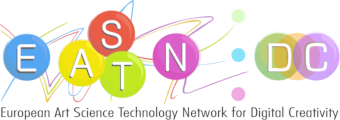Abstract
This work maps out the layout of the semiotic resources that a cohort of 65 pre-service teachers used in remixing digital multimodal texts in the context of a digital media course.. Data analysis indicated two main dominant remix patterns, encapsulation and synthesis.
Extended Summary
Introduction
Contemporary communication landscapes are characterized by two facts. First, writing is not the dominant mode of communicating meanings: visuals dominate and media messages are inherently multimodal. Second, literacy is heavily shaped by digital technology, which has come to redefine communicative and literacy practices (Manovich, 2013).
To date, the main research emphasis has been on how modes are combined to craft multimodal texts (e.g. Bruce, 2009; Smith & Dalton, 2016; Smith, Kiili & Kauppinen, 2016). Comparatively less attention has been devoted to how users structure these multimodal texts (Bezemer & Kress, 2017). The present work aims to provide an account of digital multimodal text-making by examining the texts created by a cohort of pre-service teachers (PST) in the context of a course on digital media. In particular, this study explores how PST used semiotic resources to craft digital multimodal texts in the form of digital videos.
Theoretical Framework
There are two possible routes through which modern-day text-makers can create digital multimodal texts: (a) create the semiotic resources on their their own, and (b) use existing semiotic resources that are available on the internet. The latter route is commonly referred to as remix and it involves the utilization of existing cultural artifacts for creating new ones (Lessig, 2008; Jensen, 2006). Contemporary text-makers re-use resources that are available, re-purposing them and adapting to suit their own communicative needs (Jensen, 2006; Jewitt, 2008; Ito et al., 2009; Knobel & Lankshear, 2008; Burwell, 2013; Edwards, 2016).
A handful of studies have explored remix practices though only tangentially (e.g. Albers, 2012; Gürsimsek, 2016; Katz & Shifman, 2017; Smith, 2017). We were able to locate only one study with a direct focus on remix (Hafner (2015). Considering the dearth of research on remixing resources for text making, this study examined how PST used semiotic resources to construct digital multimodal texts in the form of digital videos. In particular, the study objectives were (a) to examine the extent to which PST engage in decomposing original texts and remix them to create novel texts and (b) map out the layout of the semiotic resources used in the texts remixed. Two main research questions were addressed.
In the process of composing digital multimodal texts:
#RQ1: What is the extent to which the PST remix semiotic resources?
#RQ2: What are the main patterns of semiotic resource structuring?
Method
The study participants were 86 female student teachers who attended a semester-long course on digital media that aimed to introduce them to both the technical (software) and semiotic (meaning-making) dimensions of crafting digital multimodal texts. A short, 1-5’ long digital multimodal text in the form of a digital video was the main course deliverable. The students were asked to use the internet as a source for semiotic resources.
In total, 65 digital video projects were submitted. As there is no established method for analyzing digital text structures, we relied on artifact analysis (Willig, 2013) and loosely followed the multimodal analysis scheme advanced by Serafini and Reid (2019).
Results & Discussion
Regarding the first RQ, data analysis indicated that the extent to which the PST decomposed original texts, extracted chunks from them, and re-assembled the chunks into new texts varied considerably.
Regarding the second RQ, two main patterns were identified: encapsulation and synthesis. The former involved using a core semiotic resource and wrapping it with other resources. The dominant part of the final text is derived from an existing text (such as e.g. a video) and is relatively intact. This part is dominant and carries more weight compared to all other semiotic resources used. On the other hand, in terms of synthesis, it involved assembling a text by drawing on multiple semiotic resources rather than a single, dominant one. In this case the weight of the argument is jointly shared by several resources (image clips) rather than a single one. As a rule, synthesis is characterized by a mix of image and video clips as the PSTs combine both resource types to construct their final texts.
Over the last two decades, remix practices have gained prominence in modern culture. This study has aimed to bridge the existing research gap by investigating how PST remix semiotic resources to craft digital multimodal texts.
Back
“Reflections: Bridges between Technology and Culture, Physical and Virtual”
is supported by:






